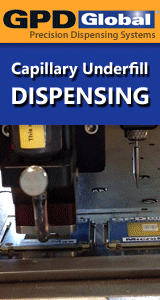Printed Circuit Board Assembly & PCB Design Forum
SMT electronics assembly manufacturing forum.
- SMTnet
- »
- Electronics Forum
- »
- Dendritic Growth
Dendritic Growth
Views: 14782
![]() Hi guys, i do not have a lot experience on this wave solder ...
- Mar 19, 2015
by
GCF
Hi guys, i do not have a lot experience on this wave solder ...
- Mar 19, 2015
by
GCF
![]()
![]()
![]() Yes generally speaking yes if there is not contamination on ...
- Mar 20, 2015
by
Bob Willis
Yes generally speaking yes if there is not contamination on ...
- Mar 20, 2015
by
Bob Willis
![]()
![]()
![]() Dendrite growth is not typically associated with a flux reat...
- Mar 20, 2015
by
eezday
Dendrite growth is not typically associated with a flux reat...
- Mar 20, 2015
by
eezday
![]()
![]()
![]() Thanks by the information provided for you. How can we preve...
- Mar 20, 2015
by
GCF
Thanks by the information provided for you. How can we preve...
- Mar 20, 2015
by
GCF
![]()
![]()
![]() Think you are talking about tin whiskers and not dendrites w...
- Mar 21, 2015
by
Bob Willis
Think you are talking about tin whiskers and not dendrites w...
- Mar 21, 2015
by
Bob Willis
![]()
![]()
![]() Thanks Guys by your comments, I am talking about Dendritic G...
- Mar 21, 2015
by
GCF
Thanks Guys by your comments, I am talking about Dendritic G...
- Mar 21, 2015
by
GCF
![]()
![]()
![]() You're right on both accounts. Thanks for straightening thi...
- Mar 21, 2015
by
eezday
You're right on both accounts. Thanks for straightening thi...
- Mar 21, 2015
by
eezday
![]()
![]()
![]() Dendritic growth is always a result of three combined factor...
- Mar 23, 2015
by
Michael
Dendritic growth is always a result of three combined factor...
- Mar 23, 2015
by
Michael
![]()
![]()
![]() Thanks by the information Mike, Another question for you is,...
- Mar 25, 2015
by
GCF
Thanks by the information Mike, Another question for you is,...
- Mar 25, 2015
by
GCF
![]()
- SMTnet
- »
- Electronics Forum
- »
- Dendritic Growth
.gif)






